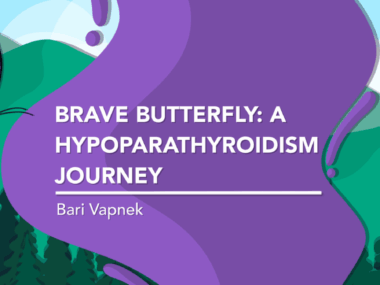I’m grateful for the International Hypopara Conference
Our community learned about research, clinical trials, potential therapies
Written by |

The week after the International Hypoparathyroidism Conference is always bittersweet. I’m so thankful I got to spend several days reconnecting with friends, sharing updates on my socials, hearing from hypoparathyroidism researchers and experts, and learning where clinical trials and therapies are in the pipeline. It’s also exhausting and reminds me that we have a long way to go before we have more treatment options.
The tone of this year’s conference was different than it has been in recent years because the community wasn’t in serious turmoil.
The first fully virtual conference was held in 2020, about a year after the initial Natpara (recombinant parathyroid hormone) recall. Since then, we’ve been caught in a desperate situation, trying to figure out how we would survive without the option of a U.S. Food and Drug Administration (FDA)-approved parathyroid hormone replacement. Now that Yorvipath (palopegteriparatide) is FDA-approved and available to patients, the vibes at this year’s conference were more about learning and inquisitiveness.
There are still gaps in treatment. Yorvipath is not a good match for everyone, and some people don’t find long-term stability on the drug. The good news is that other options are in the clinical trial pipeline. Over the weekend, multiple doctors and pharmaceutical companies presented current research and clinical trial data. It was incredible to learn more about potential once-weekly injections, oral medications, and gene therapy, which are all being studied.
One of the most concerning issues is that the U.S government shutdown is affecting clinical trials. Throughout a drug’s development, researchers connect with the FDA. Unfortunately, with the FDA scaling back its operations, all meetings and drug application reviews are delayed. Representatives from more than one pharmaceutical company mentioned that the shutdown was affecting the next steps in the trial process. In a community that still needs alternative treatment options, this was extremely frustrating news.
Researchers from the National Institutes of Health were scheduled to speak but were not legally allowed to attend the conference due to the shutdown. Thankfully, they had prerecorded their lectures, but we weren’t able to engage with them or ask questions. The Hypoparathyroidism Association promises to forward the researchers our questions once the shutdown completes and then post their answers on its website.
Leaving space for gratitude
One of the best parts of the conference this year was that everybody sat in the same room for each session — patients, researchers, doctors, and even representatives from the specialty pharmacies that distribute Yorvipath. This allowed for experiences to be shared directly from the presenter to patients and back again, prompting conversations where everyone communicated together and took notes. This is vital in creating a care plan that truly helps and supports the patient.
This year, I was reminded that I’m one of the lucky ones who has found stability. Not everyone has access to Yorvipath, clinical trials, or endocrinologists who know about hypopara. As I listened to patients who were still significantly struggling, I made sure to leave space for gratitude. I don’t know if I’ll be in their shoes in six months or six years. Without a crystal ball, the best I can do is keep putting one foot in front of the other and doing what I love: writing and advocacy work.
This is a reminder — and a promise to myself — to make the plans, commit to the events, call my loved ones more, and keep hoping that I’ll still be stable tomorrow.
Another conference is in the books, and this one was amazing. The Hypopara Association shared that the sessions will be available for viewing in January 2026 on the organization’s website. I look forward to seeing where the next year takes us on the journey toward better medications, testing, and research.
Note: Hypoparathyroidism News is strictly a news and information website about the disease. It does not provide medical advice, diagnosis, or treatment. This content is not intended to be a substitute for professional medical advice, diagnosis, or treatment. Always seek the advice of your physician or another qualified health provider with any questions you may have regarding a medical condition. Never disregard professional medical advice or delay in seeking it because of something you have read on this website. The opinions expressed in this column are not those of Hypoparathyroidism News or its parent company, Bionews, and are intended to spark discussion about issues pertaining to hypoparathyroidism.






Leave a comment
Fill in the required fields to post. Your email address will not be published.